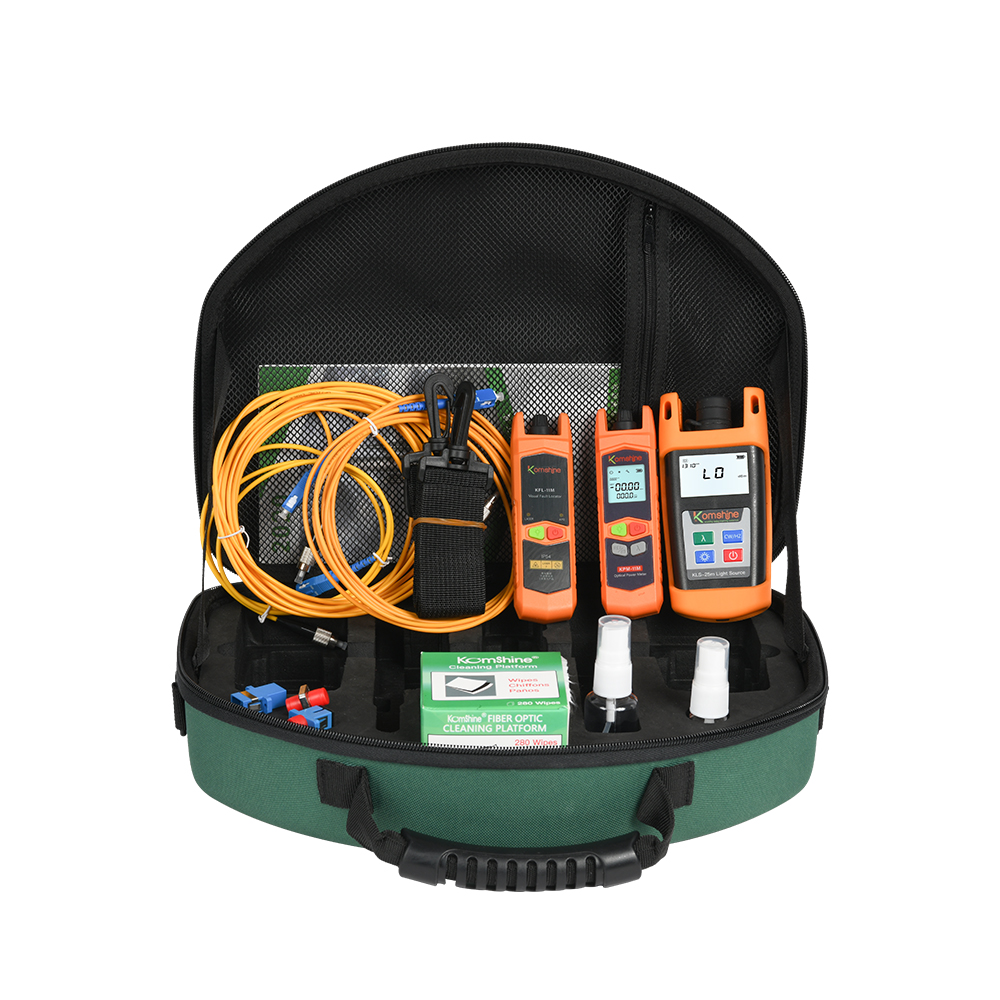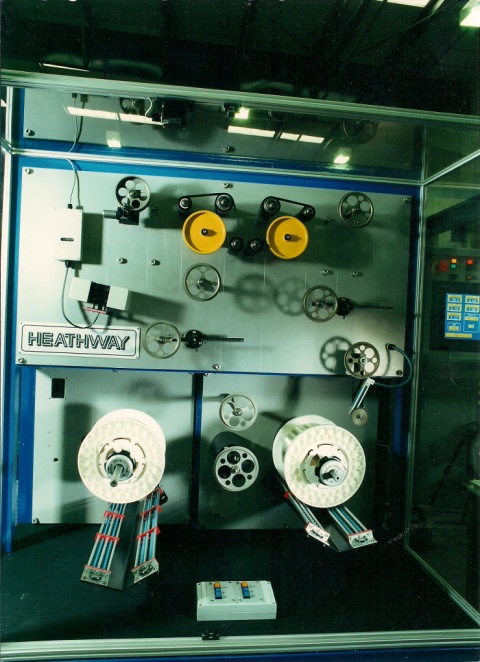The Value of an Optical Fibre Diameter Analyser in Keeping Market Specifications
The value of an Optical Fibre Diameter Analyser can not be overstated in the context of industry criteria. This modern technology guarantees precise measurements, which are crucial for excellent signal transmission and lowered depletion. By finding incongruities early, producers can promote stringent quality assurance steps. The implications of these dimensions prolong beyond conformity. Discovering the broader effect on system efficiency reveals intricacies that merit further exploration.
Understanding Optical Fibre Diameter Analysis
Optical fibre diameter evaluation plays a crucial duty in making certain the efficiency and integrity of fibre optic systems. Accurate dimension of fibre diameter is crucial, as it straight affects signal transmission effectiveness and overall system honesty. Variants in diameter can bring about enhanced depletion, decreased bandwidth, and higher susceptibility to ecological elements.
By using accurate dimension techniques, makers can maintain stringent top quality control, making sure that fibres satisfy industry requirements. This evaluation also promotes the recognition of flaws or variances during manufacturing, permitting prompt restorative activities.
In addition, understanding the diameter specifications help in the choice of appropriate adapters and fittings, thereby boosting compatibility within the network. Overall, extensive optical fibre diameter evaluation is a foundational aspect of fibre optic innovation, underpinning innovations in telecoms, information transmission, and numerous applications throughout various markets.
Trick Attributes of Optical Fibre Diameter Analysers
Optical fibre diameter analysers are outfitted with a number of crucial functions that boost their capability. Remarkable amongst these are accuracy measurement abilities, which ensure precise readings, and real-time tracking functions that offer instant feedback during the analysis process. Additionally, an user-friendly interface design helps with easy procedure, making these tools obtainable to a larger series of individuals.
Precision Dimension Capabilities
When it involves assuring top quality fibre production, accuracy dimension capabilities are paramount in diameter analysers. These tools use sophisticated technologies to supply exact measurements of fibre diameter, allowing suppliers to keep strict resistances. High-resolution optics and sophisticated formulas make it possible for the discovery of minute variations in diameter, essential for generating reputable and consistent optical fibers. Additionally, the capability to measure throughout a large range of sizes enhances convenience, fitting numerous production demands. The combination of calibration standards makes certain that measurements continue to be precise over time, minimizing the danger of problems. By using these precision dimension abilities, suppliers can support sector standards, boost item quality, and eventually drive consumer contentment in the competitive fibre optics market.
Real-Time Tracking Features
Real-time tracking attributes are vital for boosting the efficiency and efficiency of fibre production procedures. These abilities make it possible for continuous evaluation of optical fibre diameter throughout production, guaranteeing that any type of inconsistencies from specified requirements are quickly spotted. By supplying instantaneous responses, manufacturers can immediately change parameters, decreasing waste and preserving quality assurance. In addition, real-time surveillance facilitates the identification of trends and patterns in production data, providing important insights for process optimization. The integration of these attributes right into optical fibre diameter analysers sustains aggressive decision-making, empowering drivers to react swiftly to potential issues. As a result, the execution of real-time monitoring not just upholds market criteria yet additionally improves general efficiency and product dependability.
User-Friendly Interface Design
A well-designed customer interface is important for the effective procedure of optical fibre diameter analysers. Such user interfaces prioritize simplicity and accessibility, permitting customers to navigate the system effortlessly. Trick functions typically include instinctive food selections, clear visual representations of data, and personalized settings to accommodate numerous individual choices. Real-time comments mechanisms improve the customer experience by offering immediate insights into measurements. In addition, effective mistake messaging overviews users in repairing issues promptly, lessening downtime. The incorporation of touchscreens and receptive designs additionally helps with communication, making it simpler for professionals to operate the analyser in varied environments. Eventually, an easy to use interface not only boosts efficiency yet also boosts the overall precision of the dimensions, contributing to sector requirements in optical fibre manufacturing.
The Duty of Diameter Measurement in High Quality Control
Diameter dimension may seem like a small information in the manufacturing of optical fibres, it plays a considerable role in making sure total quality control. Consistency in diameter is essential for preserving the optical efficiency and architectural honesty of the fibres. Variants in diameter can bring about issues such as signal loss, boosted depletion, and lowered tensile strength, inevitably endangering the integrity of the fibre in various applications.
Quality control processes incorporate accurate diameter measurement to find flaws early in manufacturing. By applying an optical fibre diameter analyser, manufacturers can identify any inconsistencies from specified tolerances, helping with instant restorative actions. This proactive approach not just boosts product quality yet additionally lessens waste and minimizes production costs.

Conformity With Industry Specifications and Rules
Conformity with industry requirements and guidelines is essential for the accurate operation of an optical fibre diameter analyser. Sticking to these guidelines guarantees that makers keep quality control throughout the production process. Satisfying regulative demands not just improves item dependability yet also cultivates consumer trust.
Guaranteeing Quality Control
Making sure adherence to market requirements is crucial for keeping the honesty and efficiency of optical fibre items. Quality control plays a critical function in this process, as it entails the you can look here organized tracking of fibre diameter to guarantee consistency and integrity. An optical fibre diameter analyser is a critical tool in attaining these top quality criteria, offering accurate measurements that help recognize inconsistencies from developed specs. By utilizing this modern technology, suppliers can quickly discover and deal with any abnormalities, making sure that products fulfill the needed performance standards. Routine assessment through such analysers not just supports item quality but additionally improves customer trust fund and satisfaction. Inevitably, robust quality control actions promote an one-upmanship in the optical fibre market, promoting long-lasting success and compliance with requirements.
Meeting Governing Requirements
As suppliers navigate the complexities of the optical fibre market, conference regulative needs ends up being important for ensuring item security and efficiency. Compliance with sector requirements not just reduces prospective threats however additionally enhances consumer self-confidence in the items provided. An optical fibre diameter analyser plays an essential role in this procedure, permitting manufacturers to confirm that their items follow specified measurements and resistances. By using such analyzers, companies can ensure that their optical fibers fulfill the strict laws stated by market authorities. This aggressive approach to high quality guarantee not only helps with conformity yet also enhances the manufacturing procedure, minimizing the likelihood of costly recalls or denials. Inevitably, adherence to governing criteria is important for maintaining an affordable side out there.
Advantages of Accurate Diameter Measurement

Precise diameter measurement plays an essential duty in the efficiency and dependability of optical fibres. Guaranteeing that fibres meet specified diameter tolerances lessens signal loss and makes the most of transmission efficiency, straight influencing general system performance. This accuracy is crucial in maintaining ideal light breeding, as even minor inconsistencies can bring about boosted attenuation and lessened optical signal high quality.
Exact measurements enhance compatibility in between elements in fibre optic systems, helping with seamless assimilation and minimizing the threat of failings. Consistent diameter dimensions also add to improved production processes by determining potential flaws early, consequently lessening waste and decreasing production expenses.

Incorporating Optical Fibre Diameter Analysers Into Production
Integrating optical fibre diameter analysers into production processes improves the capability to preserve rigid top quality control actions. By using these analysers, manufacturers can achieve exact and constant measurements of fibre diameters, which is necessary for making certain item efficiency and integrity. The combination procedure normally includes placing analysers at bottom lines along the manufacturing line, making it possible for real-time surveillance and instant comments on diameter variations.
This aggressive technique permits fast adjustments to the production parameters, lowering the risk of flaws and waste. Additionally, the information collected can be made use of for statistical procedure control, contributing to continual improvement initiatives. Operators are empowered with actionable understandings that promote educated decision-making regarding product usage and manufacturing methods. Ultimately, the incorporation of optical fibre diameter analysers not just boosts item high quality but likewise sustains compliance with market criteria, reinforcing a business's online reputation for excellence in the competitive optical fibre market.
Future Patterns in Optical Fibre Measurement Modern Technology
Arising advancements in optical fibre dimension innovation are positioned to change the industry. The consolidation of expert system and artificial intelligence is anticipated to enhance accuracy and effectiveness in diameter evaluation. These modern technologies make it possible for real-time data processing, enabling prompt changes throughout manufacturing, consequently decreasing waste. Moreover, the development of non-contact dimension techniques promises a reduction in physical interaction with fibers, preserving their integrity.
Furthermore, miniaturization of measurement devices is expected to lead to more mobile and straightforward solutions, helping with on-site assessments. optical fibre diameter analyser. Assimilation with IoT systems will enable remote monitoring and information collection, cultivating boosted anticipating maintenance and quality assurance
As markets progressively demand greater efficiency criteria, the advancement of optical fibre dimension devices will certainly play a critical role in satisfying these expectations, making certain that manufacturers can constantly supply high-grade products while sticking to rigorous governing criteria.
Often Asked Questions
Just How Commonly Should Optical Fibre Diameter Measurements Be Conducted?
Regularity of optical fibre diameter dimensions usually depends on he said manufacturing volume and quality demands. Regular checks, frequently their website day-to-day or regular, help ensure consistent top quality and adherence to requirements, lessening prospective defects in fibre production procedures.
What Are the Common Prices of Optical Fibre Diameter Analysers?
The typical expenses of optical fibre diameter analysers vary commonly, varying from several thousand to tens of hundreds of dollars, depending upon features, accuracy, and producer, impacting choices for companies buying quality dimension innovation.
Can Diameter Analysers Be Adjusted On-Site?
Diameter analysers can commonly be calibrated on-site, permitting for instant adjustments to assure precision. The particular procedures and demands might differ depending on the supplier's guidelines and the modern technology utilized in the analyser.
What Sorts Of Fibres Can Be Measured With These Analysers?
Optical fibre diameter analysers can gauge numerous fibre kinds, including single-mode, multi-mode, specialty, and large-core fibers. Each type needs details calibration setups to guarantee exact and reputable diameter measurements throughout the manufacturing process.
Are There Particular Upkeep Demands for Diameter Analysers?
Diameter analysers require regular calibration to assure precision, in addition to regular cleansing to avoid debris buildup. In addition, examining software updates and evaluating mechanical elements add to their optimal efficiency and long life in determining fibre diameters properly.